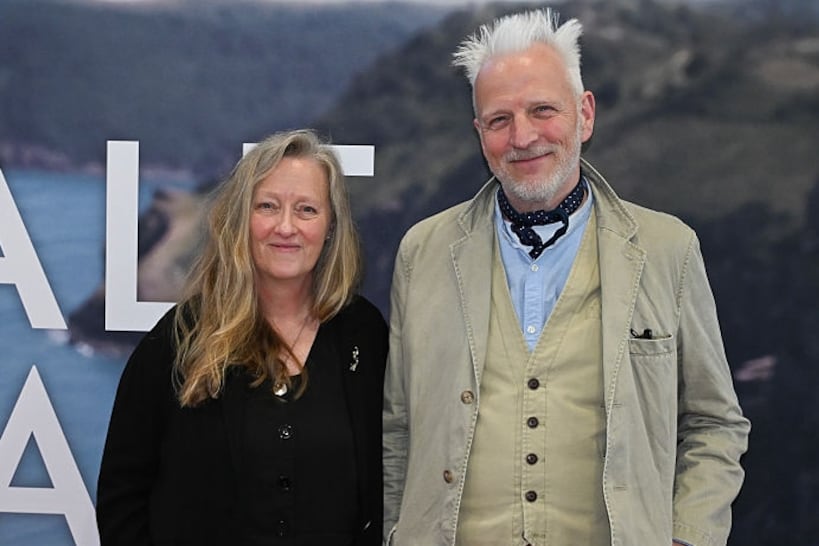After two years as an online venture because of Covid-19, the BT Young Scientist & Technology Exhibition (BTYSTE) is returning to its spiritual home in Dublin’s RDS this week for its 59th edition.
Those set to play their part in the annual showcase of young people’s scientific endeavour – students, teachers, judges, volunteers and organisers – are thrilled it is again an in-person event, opening on Wednesday and running until Saturday.
Mari Cahalane, head of the BTYSTE, says a third virtual staging of the exhibition “would have been challenging”, though there is inevitably some apprehension about going back to the real thing. It is much more demanding logistically and a “big physical crowd” is set to throng the RDS. The organisers have retained some pandemic-era elements such as entrants having to provide a video outlining their research.
The “meeting-up element” is at the core of the BTYSTE, she adds, especially for young people to interact and benefit from each other’s knowledge.
READ MORE
Entries this year are up by almost 18 per cent, with 550 projects qualifying for the RDS showcase. “The quality is as good as ever. The judges are very impressed,” she says.
Two standout elements invariably arise in the competition: a piece of original and advanced science features among top entries and the path to success is often forged through repeat efforts.
Sixth-year student Andrei Florian, of St Aidan’s CBS in Dublin, is an illustration of both. He won the individual runner-up award last year after he developed a secure and transparent electronic voting system using blockchain elements.
He went on to win top prize in the software systems category at the Regeneron International Science and Engineering Fair in the US, one of the world’s largest science competitions for second-level students.
This year – his third time participating – he has entered a group project with classmate Ilya Solovjov on synthetic DNA, which is at the cutting edge of biological research. They are developing a system to screen novel DNA products which would help identify malicious content by flagging offending genetic sequences.
Consistent approach
Through his interest in cryptography, he provides the computer optimisation elements of the project while Ilya translates the biology into accessible language. They have worked on projects before.
“We are essentially the same person; we think the same way!” adds Andrei, who is delighted the event is returning to the RDS. “The online process was fine but there wasn’t much interaction. Face-to-face is going to be very exciting, to present not only to judges but to a wide audience.”
For teachers of entrants, this is a hectic time of year. Irene O’Sullivan, of Moate Community School, Co Westmeath, with fellow teacher Mairead Cusack, has nine entries this year. Being from outside Dublin, this requires a lot of logistics as transport and hotel accommodation have to be arranged. She helps with the biology and physics projects; her colleague looks after the chemistry end.
The students were excited about getting to the RDS, O’Sullivan says, “and looking forward to the experience”.
The mixed school with 850 pupils has built up its participation over time, starting with transition years and extending to other years – a growing number of prize-winners followed. She has noticed a trend of improving standards and broadening ambition every year “and when it’s in-person they see what other students are doing”.
Above all the experience of doing projects really benefits the students, she says, and is a good indicator – especially in the senior cycle – of what individuals will do in college and if they will pursue a career in science, technology, engineering and maths.
The robustness of the judging process is underlined by Prof Grace McCormack of the University of Galway, who is in her eighth year as a judge in the biological and ecological science category. While judges push projects in their category for higher honours, any bias is left outside the room when evaluating outstanding work with a broader group of judges in determining genuine winners.
The key questions, she adds, are how novel and how thorough is the work; where is the impact? “We pay a lot of attention to analysis, especially statistical analysis, and if students have done it themselves, and ensure they are not coached by teachers.”
Their project workbooks are thoroughly valued. In the modern era, being good communicators helps too, in being passionate about their work and presenting it to judges. She is looking forward to that social dynamic. “It was grand on screen and convenient with less time required but it’s not the same really, and it’s not the same for students either,” McCormack believes.
Alan Shanley is a veteran red coat of 12 years standing, part of team of 130 volunteers who ensure the BTYSTE runs smoothly and participating students have the best possible experience.
The BT director of customer service has a team of 400 people in Ireland in the course of a normal day. But in this instance he is told what to do, which range from giving VIP tours for politicians and ambassadors to crowd control. It is inevitably “a fantastic experience in a miserable month”.
It was right that the BTYSTE went virtual, Shanley says, but he missed “the buzz” of the RDS, and seeing so many young people developing and growing in confidence over the space of just a few days.
What always stays with him is “their potential to do amazing things”, he points out, while the red coats simply play a supporting role.
Details of the 2023 BTYSTE including how to book tickets to attend is available at: btyoungscientist.com












